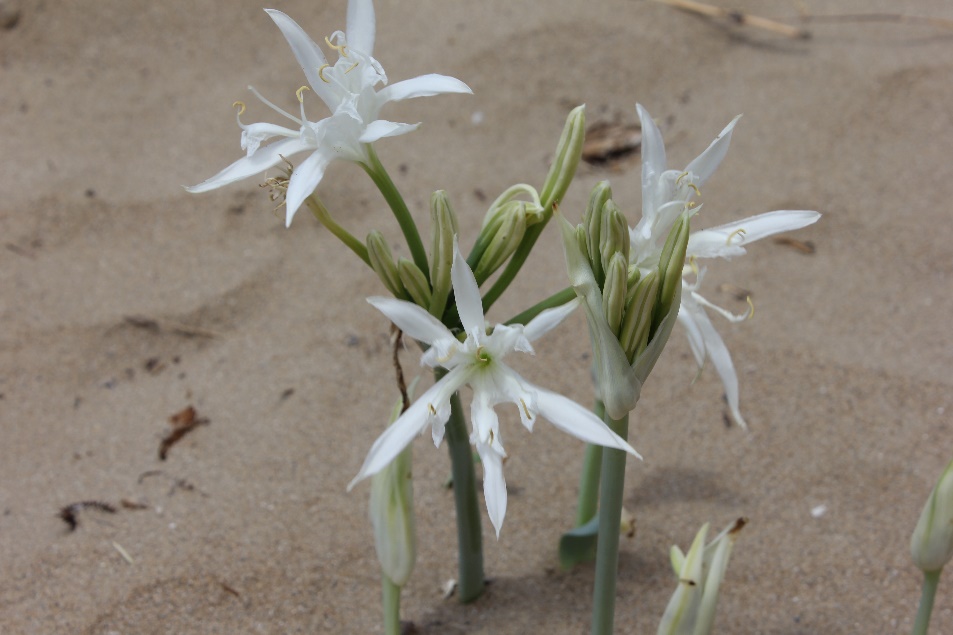
Dunes formations remind of desert environments and quite often appear along the Greek coastline; they also make part of Natura 2000 protected areas of Kefalonia. These peculiar geoformations derive from the deposition of sand grains, transported there by the wind and/or water. Sand dunes are considered important ecotopes hosting flora and fauna species able to resist and adapt to sand dunes harsh conditions. The main representative of dunes vegetation is the sea lily Pancratium maritimum exhibiting large white flowers, and other species growing in the surroundings such as marram grass (Ammophila arenaria), wickers (Vitex agnus castus), wild pear trees (Pyrus spinosa), thorny burnet (Sarcopoterium spinosum), thyme (Thymus vulgaris), oleanders (Nerium oleander) and wild olives (Olea europea var. οleaster).
These small sand hills located along the shoreline represent an important ecotope of the transition zone where the land meets the sea; sand dunes systems have been created through processes of erosion and sand deposition in the coastal zone. The sand is carried away from the beach by the wind and gets replaced from other sand transported there by currents and waves. The deposited sand derives from river basins, sediments formed through the erosion of rocks and submarine accumulation of sand deposits. Due to their sandy composition the dunes are subject to constant change, and represent a dynamic geological formation of the coastal zone. Their genesis and maintenance depends on the prevailing strong winds, the action of the waves to the coastal zone, and the sorting and supply of corrosive materials transported by torrents and rivers to the coastal zone.
Sand dunes, sandy beaches, coastal mudflats and salt marshes are coastal ecotopes performing a wide range of important functions; these habitats are indispensable for the protection of wild flora and fauna acting as natural filters and barriers to sea water. In particular, sand dunes and salt marshes mitigate the action of ocean waves, preventing the erosion of the coastal zone. The ecosystem of sand dunes is a very sensitive, but also highly dynamic habitat type, hosting flora and fauna resistant and highly adapted to the harsh conditions of the dunes. Their ecological importance is attributed to sand dunes vegetation, having a primary role on dunes creation and conservation. Specifically, dunes vegetation:
- sustains the sand,
- stabilize the coastline and the sediment from the corrosive action of the wind and the ocean
- acts as a protective natural barrier of the inland against the negative impacts of sea water and wind intensity
Moreover, dune ecosystems are highly sensitive, fragile and adapted to alterations caused by natural causes (wind and waves); independently of dunes area, thickness and height, they play an important role to groundwater hydrology of the broader area, due to geological layers underlying sand dunes with groundwater storage capacity.

The development of tourism in the Greek islands, contributed to the vulnerability of most sand dunes ecosystems leading to extinction; as a result, sand dunes are mostly found in inaccessible and remote places. Given the importance and the rarity of the plants thriving in sand dunes, visitors should not cut or uproot them causing destruction of their habitats, and seriously damage the environment. Proper information, awareness and active participation of citizens can encounter threats of sand dunes like gradual degradation or extinction.